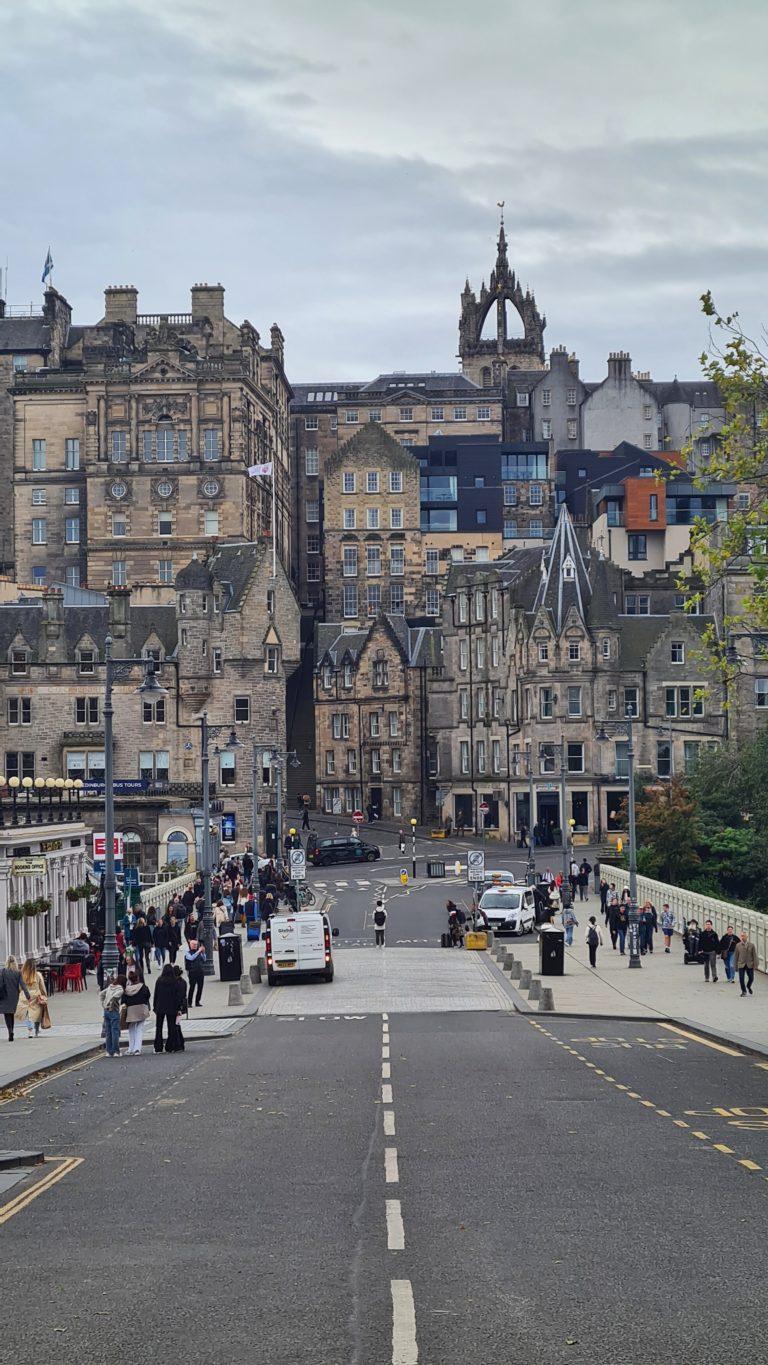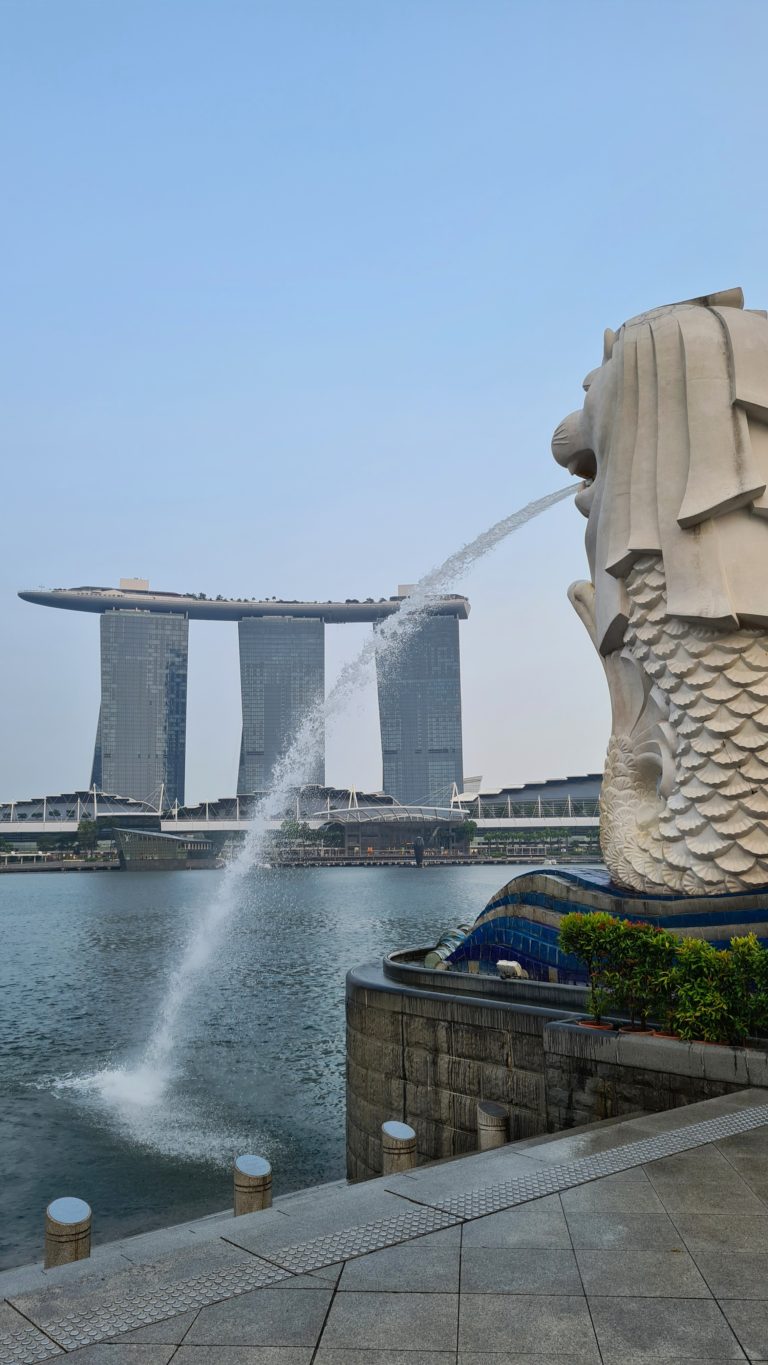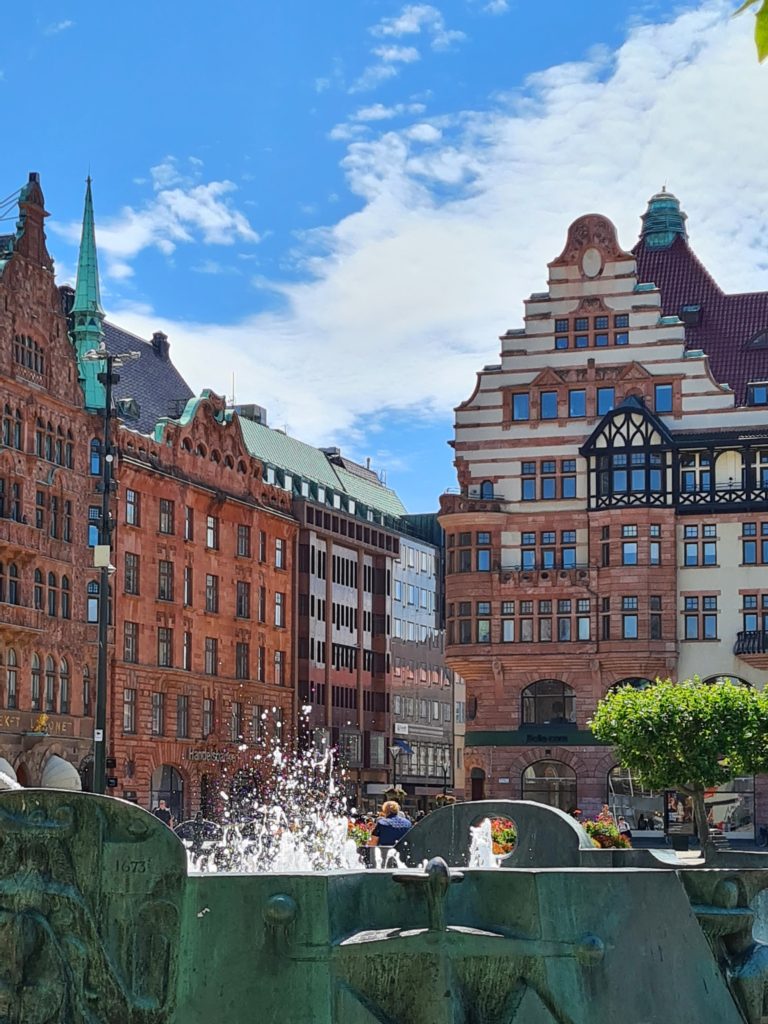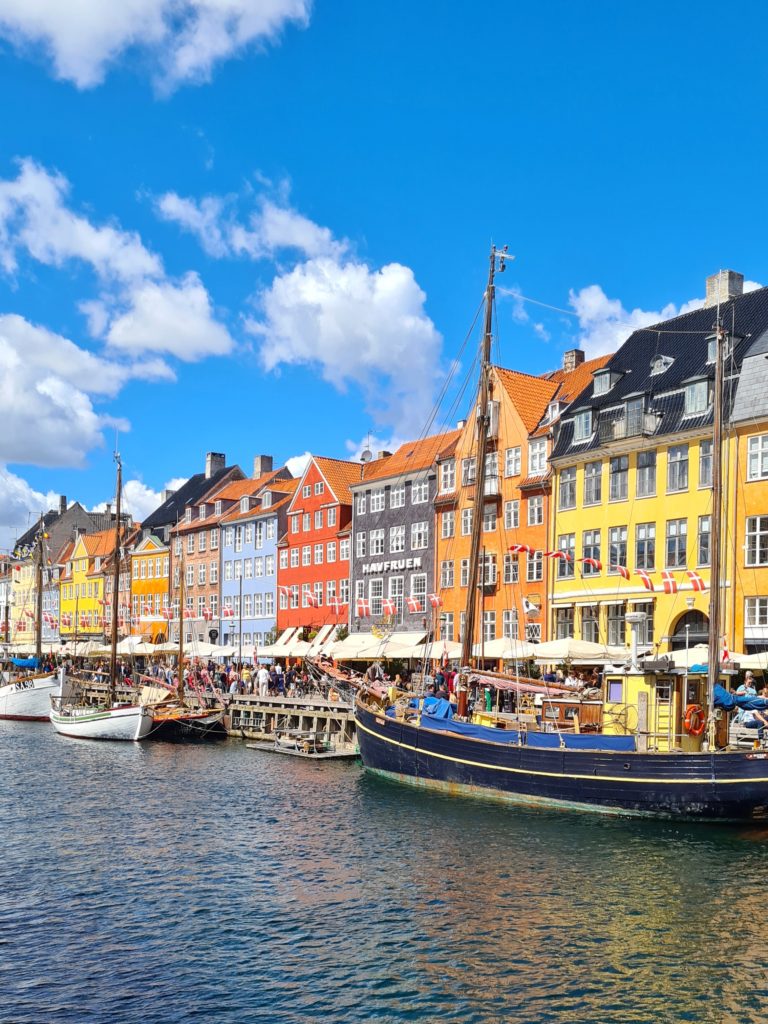Welcome to Jordan! 🇯🇴 This is what I heard every day from Jordanian people and we were really well received. They don’t only do this with tourists, that’s their way of being. They would put you at their table anytime and help you with anything you need. A safe country with a lot to offer, Jordan amazed us for 7 days, more than we expected!
To cross the country from North to South or vice versa, there are 3 options. The ideal is to configure the route so that you always go on a different road.
- Desert Hwy (15 is the main highway, the fastest, but it would be recommended to avoid it because you don’t have much to see on the road).
- King’s Hwy (road 35 takes you through a gorgeous canyon, especially the view from Madaba to Karak)
- Jordan Valley Hwy (with a totally different landscape, road 65 starts from Aquaba to the Dead Sea).
itinerary
details pre-trip:
Tickets:
Ryanair (Bucharest-Amman) 178 euro/pers.
Jordan Pass:
E un must! Buy it online from here. It includes both the visa to enter the country, the ticket to Petra, and 95% of the rest of the destinations throughout the country. It costs ~70JD depending on how many days you want to visit Petra.
If you don’t get your Jordan Pass online, you will have to pay 40JD for the entry visa (cash on arrival), 50JD (one day Petra) plus the rest of the entrance fees from Amman, Jerash, Wadi Rum..so Jordan Pass is a deal!
Car rental:
We made a reservation on http://www.budgetjordan.com/ . Later at the airport, we paid 127 JD/6 days and a deposit of 350 JD locked from the credit card
Travel Insurance:
Groupama ~40lei / 8 days.
Trip and Costs:
We landed on a Saturday at 5 o’clock. I passed the security control quite quickly and then I added another stamp to my passport.
Before leaving the airport, we bought a SIM card (orange) – 15JD and withdrew cash from Arab Bank ATM (with 4JD commission). We took the car booked with Budget Car and headed for our first accommodation.
Day 1: Madaba, Mount Nebo, Kerak
Accommodation: Coco’s guesthouse – (30JD cash)
We started our journey in Madaba, a small town, located 30 minutes from the airport. It is known for its very well-preserved Byzantine mosaics, even the best in the country.
- Visitator Center (for local map)
- Archaeological park (included in Jordan Pass)
- Saint George Church – orthodox church – 1JD
- John’s Church – catholic church – 1JD
- Madaba Museum (included in Jordan Pass)

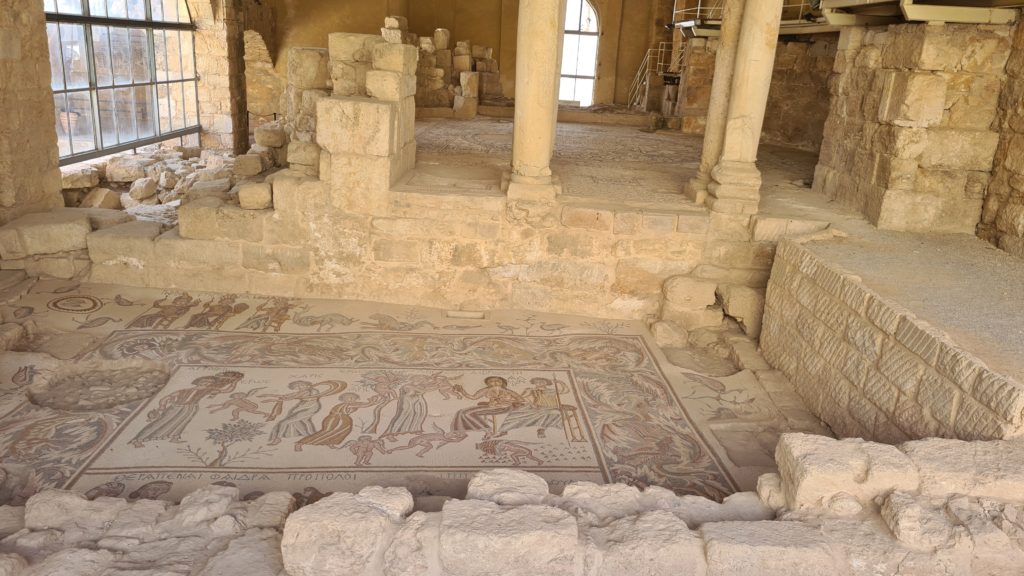
Mount Nebo is a few minutes’ drive from Madaba and is the place mentioned in the Bible, where Moses ascended and saw the Promised Land. The place offers a panoramic view, from where you can see the valley of the Jordan River and the Dead Sea.
Entrance costs 3JD.
The final destination of the day was Wadi Musa, but until there we really enjoyed road 35 / King’s Road. It passes through an impressive canyon and the view is worth millions!!

We also had a short stop at Kerak Castle, built in the 1100s, it is the largest medieval castle in Jordan.
Day 2: Wadi Musa - Petra
Accommodation: Crystal House (70 JD – 2 nights)
We arrived at 8 o’clock, let the car in the free parking area, got a map of the place, took the tickets, which were included in the Jordan Pass (otherwise the cost is 50JD) and started for what would be the longest day in Jordan.
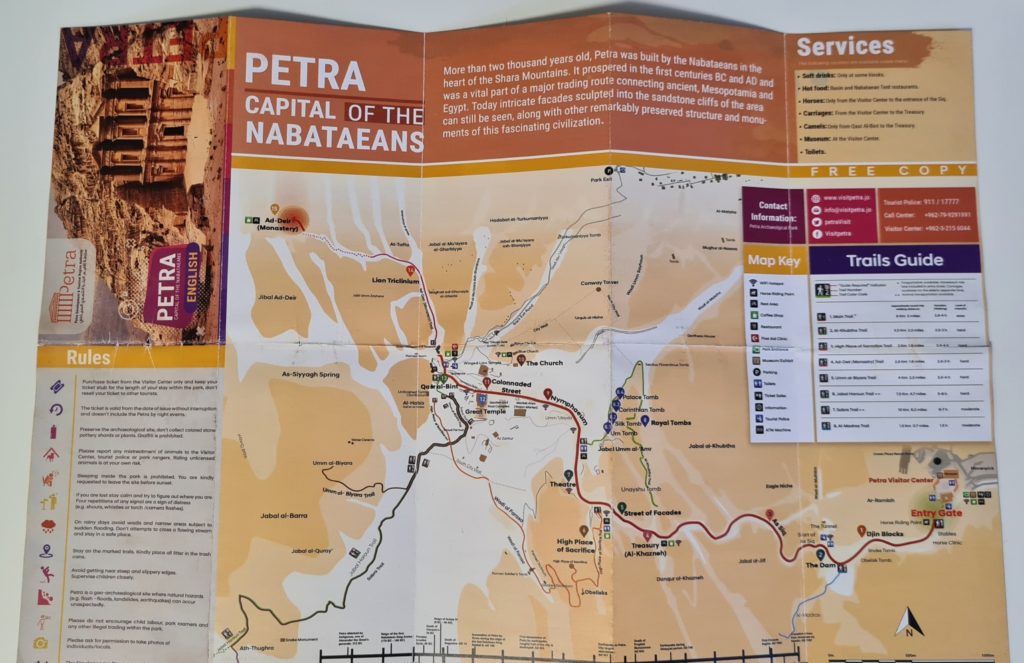
What do you need to know about Petra?
Petra is a place with historical importance, where the nabataeans (nomadic arabs) lived and the main occupation was trade. Evidence of the existence of the nabataeans has been discovered since the 2nd century BC, when Petra became their capital, but it is assumed that it was built much earlier.
The population reaches its peak, around 20,000 inhabitants in the 1st century AD. Although initially it was called Raqmu. When the romans conquered the area, it was renamed Arabia Petraea. After several earthquakes and the loss of commercial maritime routes, the importance of Petra decreases and remains in the shadows, where only a few nomads lived.
The first european, who visits the place and wrote about it, it is the swiss Johann Ludwig Burckhardt, in 1812. Later in 1985 it becomes a UNESCO World Heritage site. Today, Petra is part of the “New 7 Wonders of the World”, and it received this title on 07.07.2007.
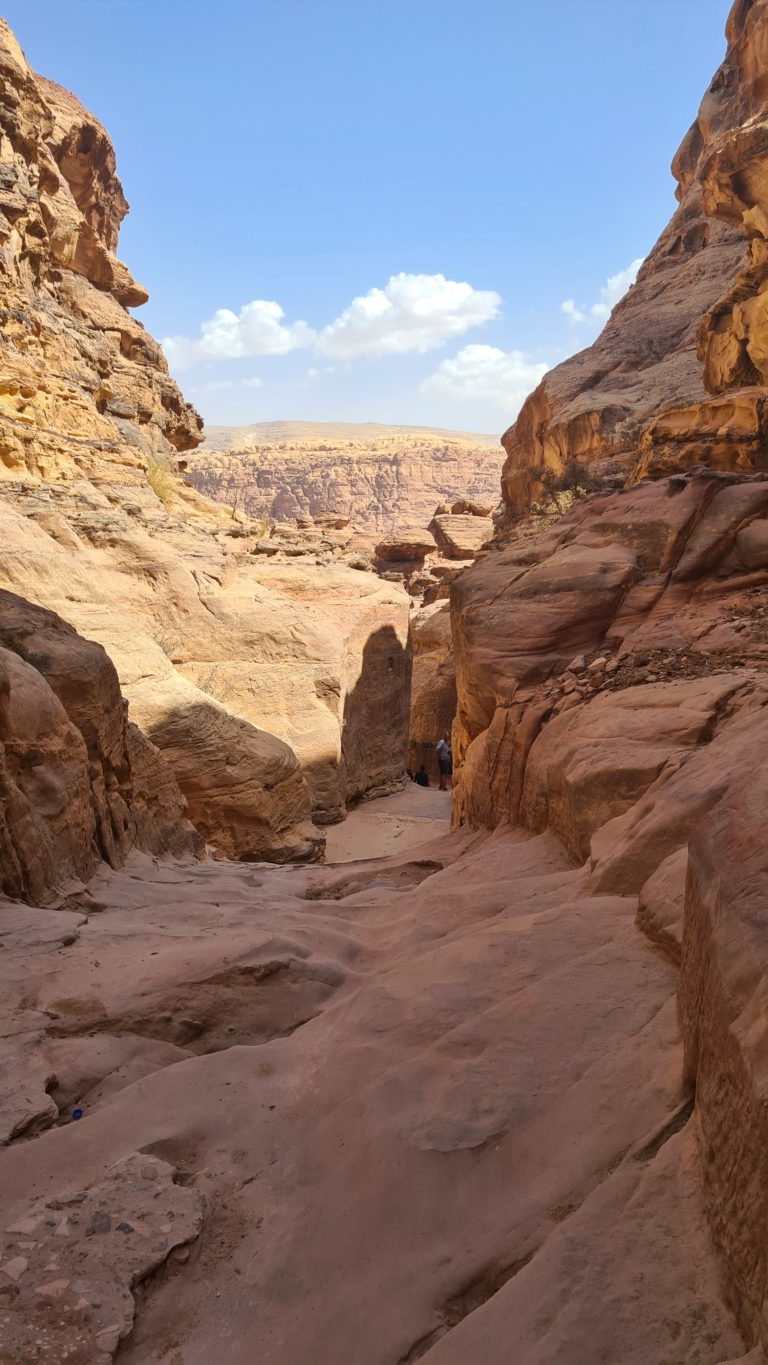
How to visit Petra?
If you did not manage to contact a guide, as us, then the local map will be your friend. The 15 objectives that you can see on the road are:
- Djinn Blocks
- The Dam
- The Siq
- The Treasury (Al Khazna)
- The Street Facades
- High Place of Sacrifice
- The Theather
- The Royal Tombs
- The Nymphaeum
- The Church
- The Colonnaded Street
- Great Temple
- Qasr al-Bint
- The Lion Triclinium
- Ad Deir (The Monastery)
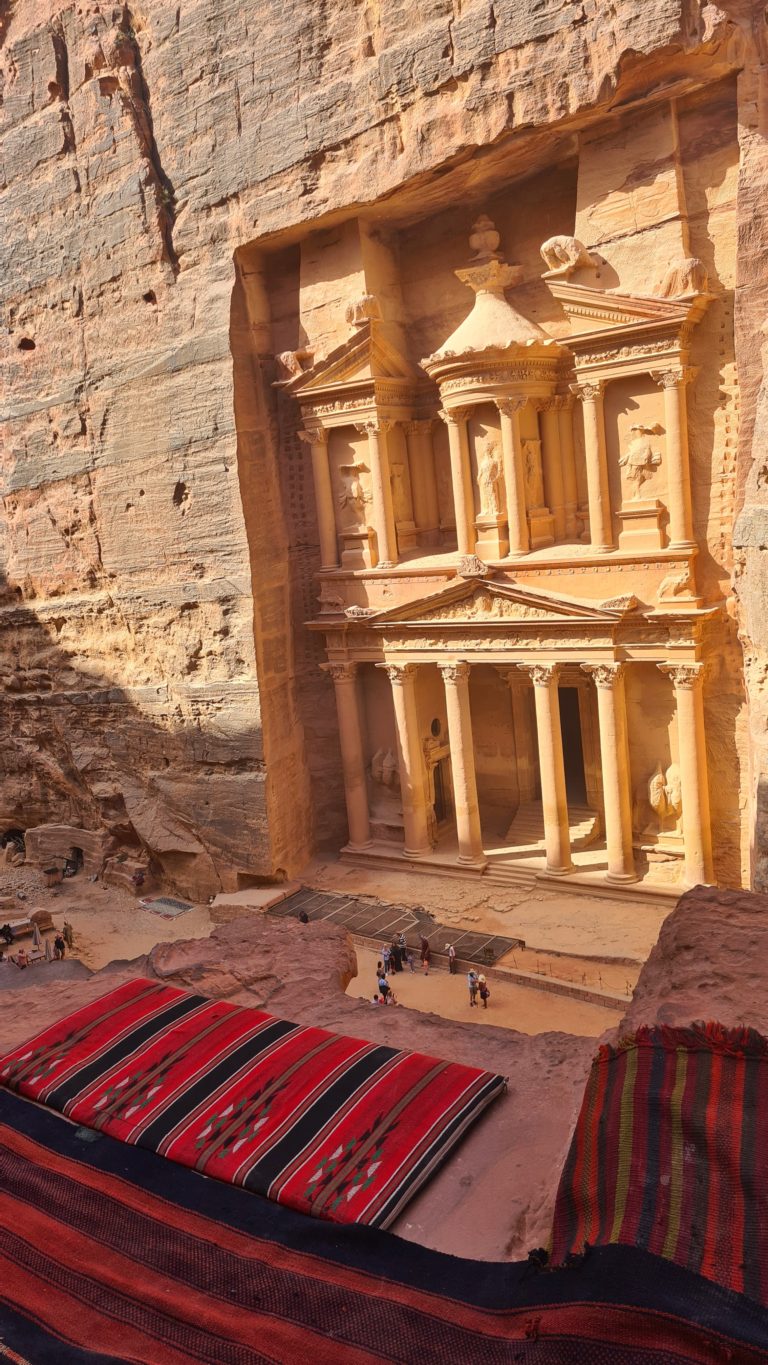
The road to the Treasury takes about 45 minutes, with stops, but the Siq you pass through is so beautiful that you would definitely want it to take longer.

Once we reached the Treasury, we chose to climb the rock in front, for some view points. Things are on a tip basis (it cost us 7JD), for a local to guide you on the rocks. It is recommended to do it this morning, for a good light.
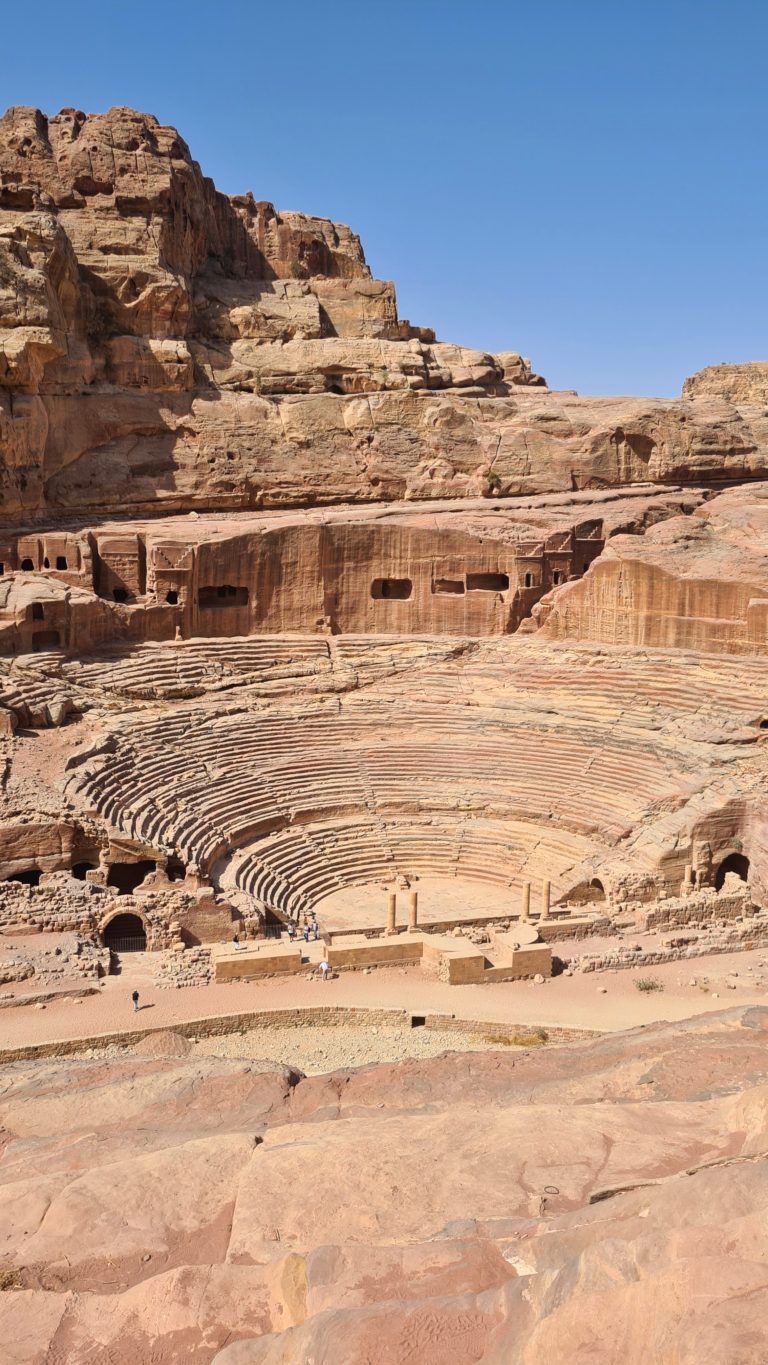

After the Great Temple, the road becomes more and more bumpy, there are many steps to climb, but I promise you that everything is worth it. The final point will be The Monastery (Ad-Deir) which, surprisingly, is bigger than the Treasury and obviously with fewer people. It measures almost 50m high and was built in the 2nd century AD.

The way back was much easier, and we were even surprised to see how different the view is. Absolutely, for this day, the rule applies: Enjoy the route, not just the destination!
We returned to the hotel at 4-5 in the afternoon on the most beautiful day in Jordan.🐫❤️
Day 3: Little Petra, Wadi Rum
Our morning started with a little shopping in Wadi Musa. We bought 2 typical Bedouin scarves with 10 JD for the dessert experience.
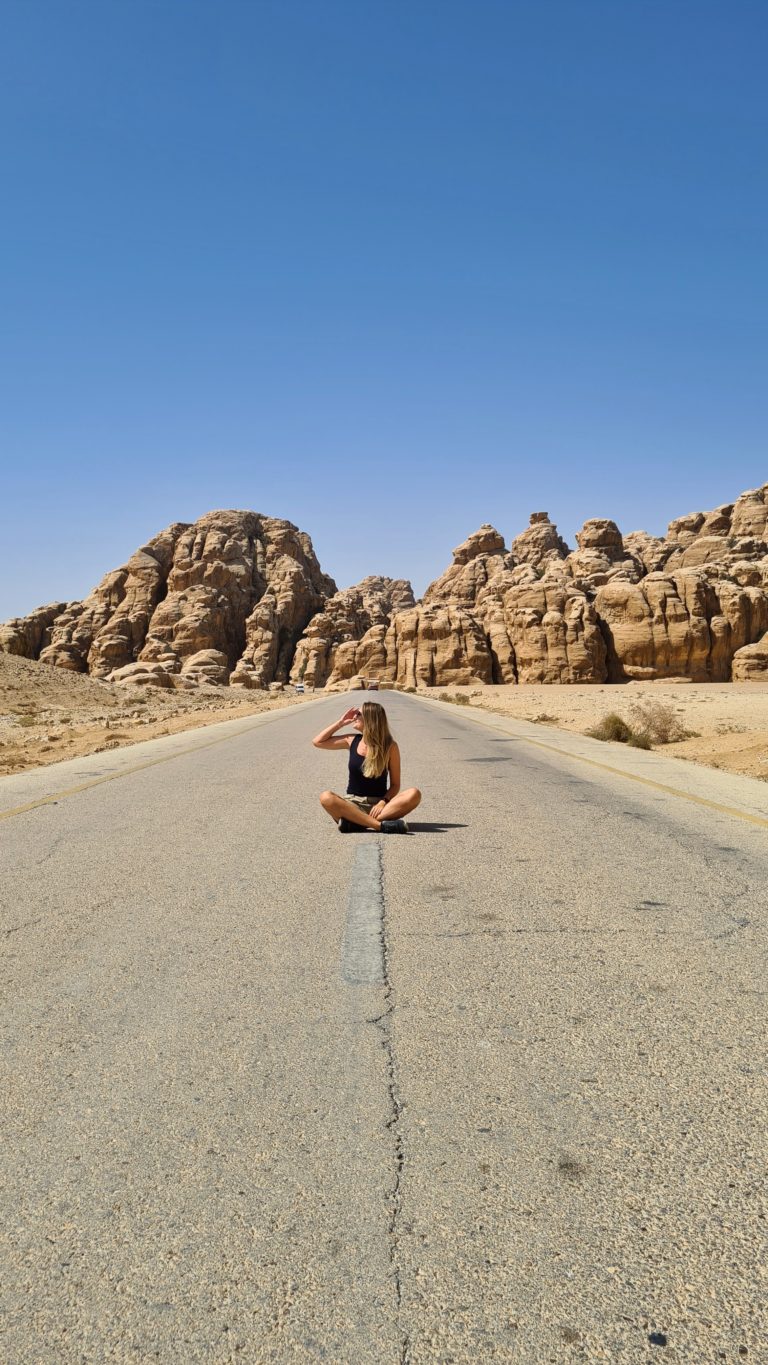
Because it is a few minutes by car from the city, and the road to get there is GREAT, we chose to go to Little Petra. The entrance is free, it takes about 1 hour to visit it, and just like Petra, the buildings carved in stone are from the Nabataean period, over 2000 years old.

On the way to Wadi Rum Visitor Center, we stopped at Wadi Rum Train Station to see a train track, with a unique width in the world. It was built by the Ottoman Empire during the First World War.
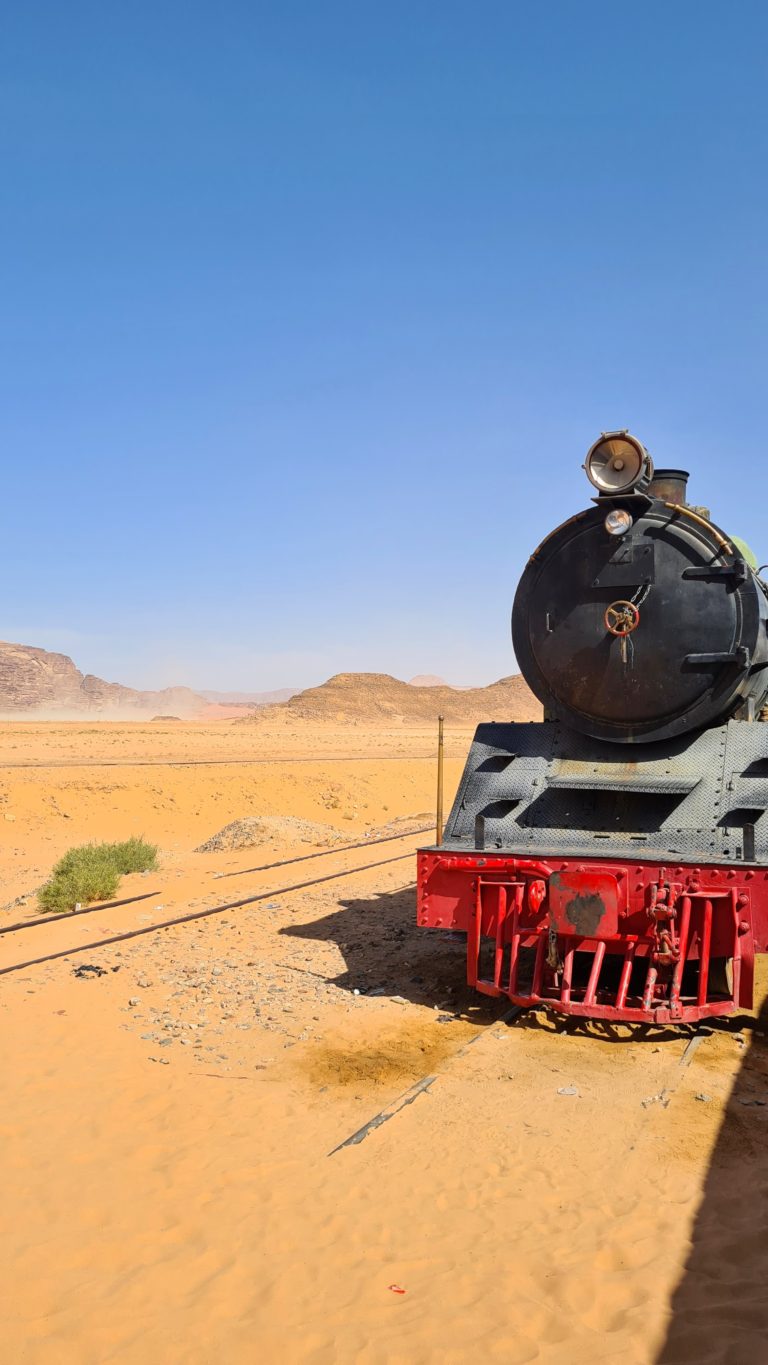
In the Visitor Center parking, we met Suleyman, the one who takes care of Sand Star Camp, the place where we were going to stay. If you have a Jordan Pass, the entrance is free and you just go to get a stamp, otherwise I think you have to pay 5 JD.
In the evening, we climbed a rock to see the sunset, smoked shisha with the bedouins and had a great dinner. The surprise of the evening was actually a free 4×4 tour, offered by the camp, at midnight, in the middle of the desert to see the stars. Priceless ✨

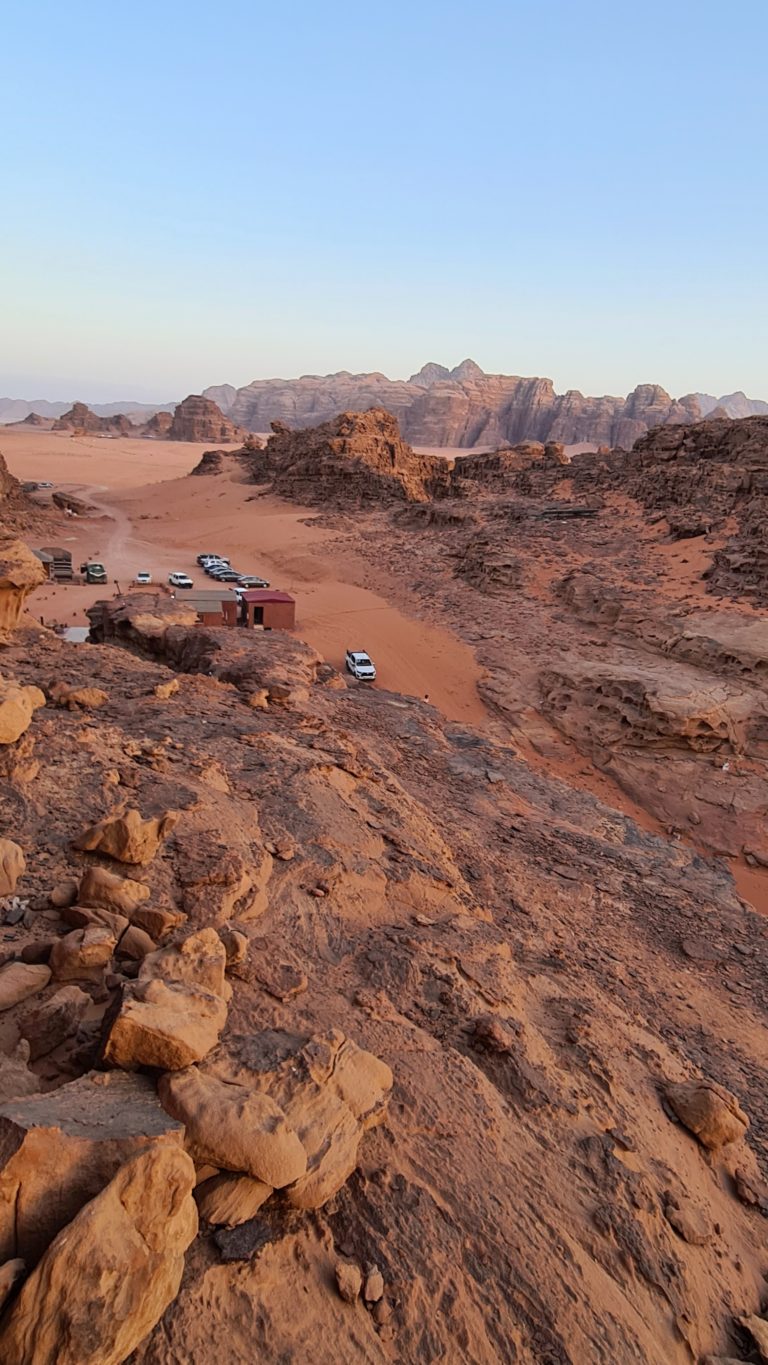
Day 4: Wadi Rum
Accommodation: Sand Star Camp (20JD/1 night)
Jeep tour: 4h – 67 JD / entire car
Dinner: 10JD/ per person
We started the tour at 8AM and it seemed perfect. In the 4 hours, we could see:
- nice dune view point
- old inscriptions Alameleh
- Laurence House
- Rock Bridge (or the Arch)
- a panorama with Big Arch
- Mashroom Rock
- Burrah Canyon
- Laurence Picture

The 4 hours passed immediately. From red-orange to yellow-sand, the colors were constantly changing, both the cliffs and the sand. The hospitable jordanians offered us tea at every stop, and the guide let us drive the jeep for a good part of the route.
All in all, nice experience!

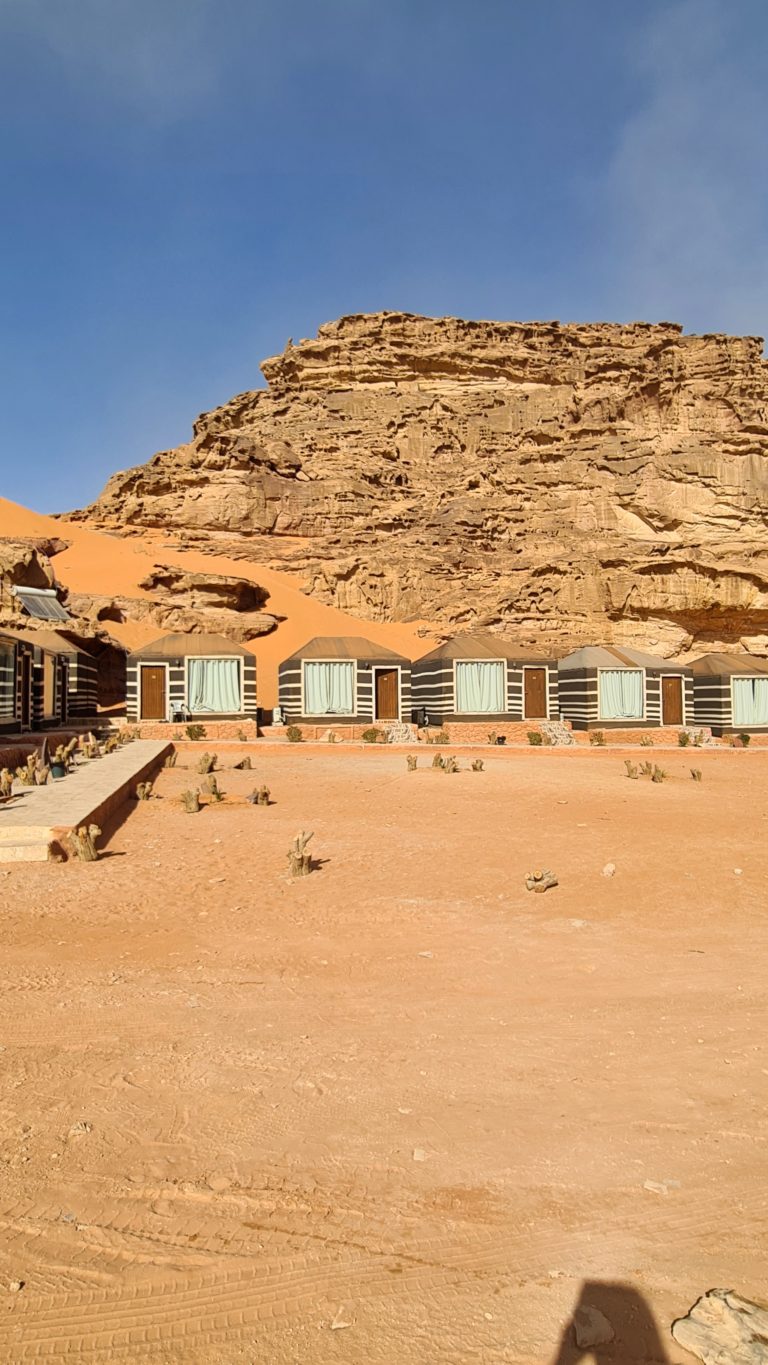
After the tour, we got in the car and headed to the Jordan Valley Highway, the road that leads to the Dead Sea.
I was very shocked by the fact that you are limited in the choice of accommodation here. The place is full of expensive resorts and does not justify its price from my point of view. We decided to choose the lesser evil and because we already knew from friends that Ramada is not a good option, we decided to stay in the Dead Sea Spa Hotel (120 JD/night). The hotel has a private beach, usually open until 6-7, so the sunset caught us here, with mud on our elbows and knees 😅.
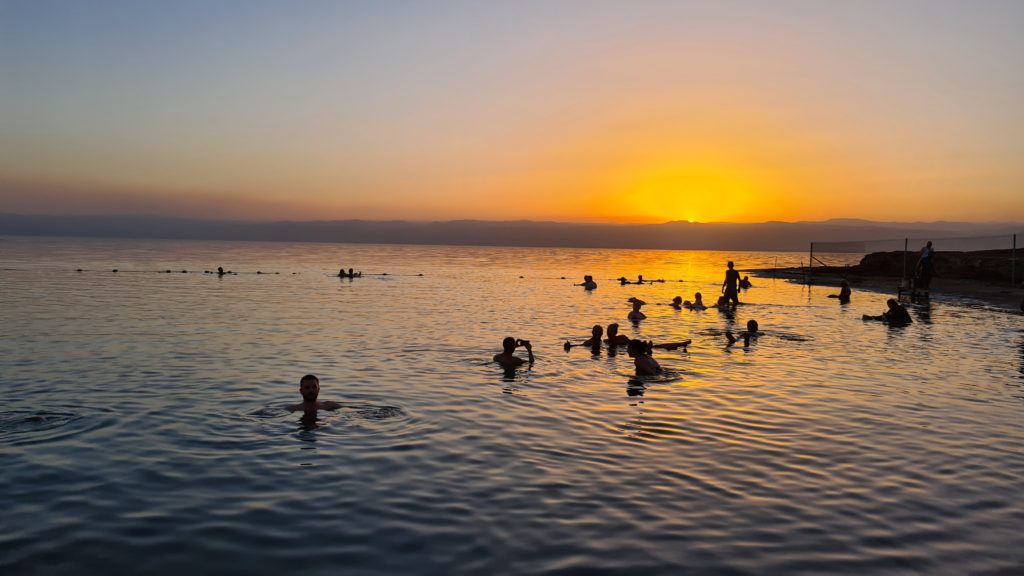
Day 5: Dead Sea, Jerash
Accommodation: Dead Sea Spa Hotel (120 JD/ night)
Hotel check-out was at 12 o’clock, so we planned in the morning, so that we could be at the beach at 9 o’clock and enjoy 2 hours of the saltiest water in the world. Oh yes! and it’s salty..
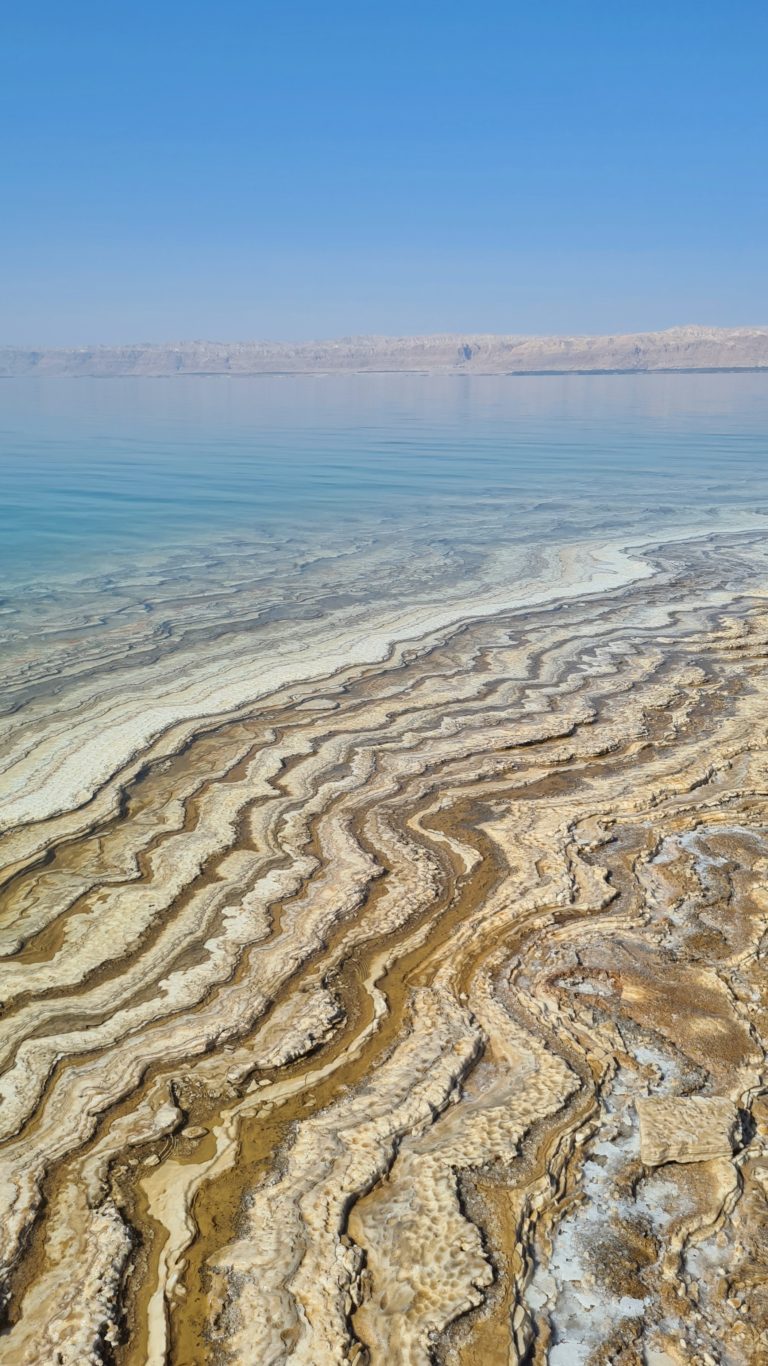
The Dead Sea is the place with the lowest altitude in the world and with the highest salinity, 35%. It is a closed sea and the only flowing water that feeds it is the Jordan River. It is predicted that in the future, this sea will dry up, because every year its level decreases.
For us, one night and a few hours here were enough. You cannot stay in the water for more than 1-2 hours, and the climate is very dry. I think that the highest temperatures in Jordan are found here, at least that’s how we felt them. However, it is a unique and unmissable experience.🌊
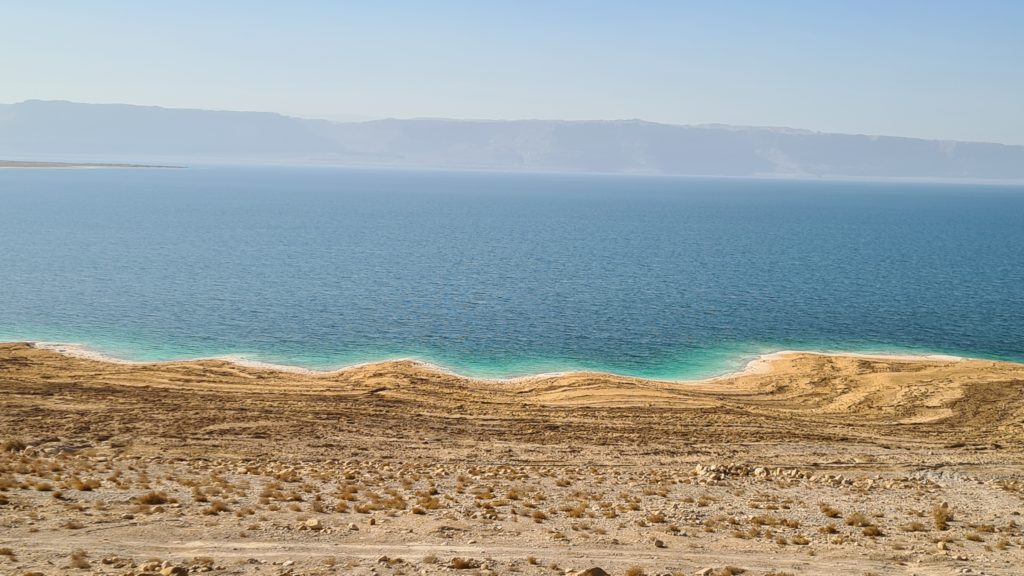
At 2 hours by car from the Dead Sea, there is the city of Jerash. I admit I was totally surprised, how well the area is preserved. It is considered the best preserved site of roman architecture in the world outside of Italy. It is assumed that Alexander the Great is the founder of this city, but most of the roads and trade routes were built during Traian’s times.
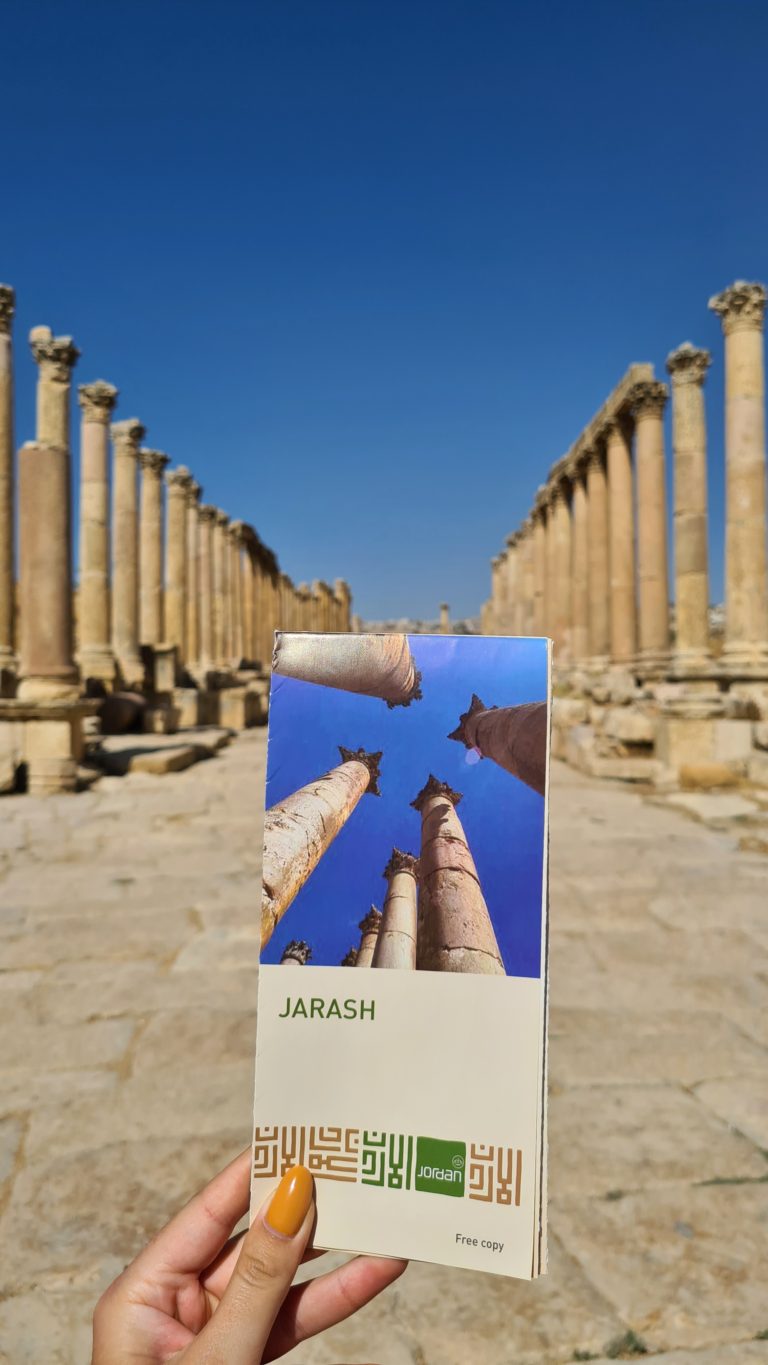
From Jerash Visitor Center, we took the local map and it took about 3 hours to visit everything. From Hadrian’s Gate, to Traian’s Gate, from the South Theater, to the North Theater are a multitude of columns, thousands of years old.
The entrance is included in the Jordan Pass, and the parking is free.

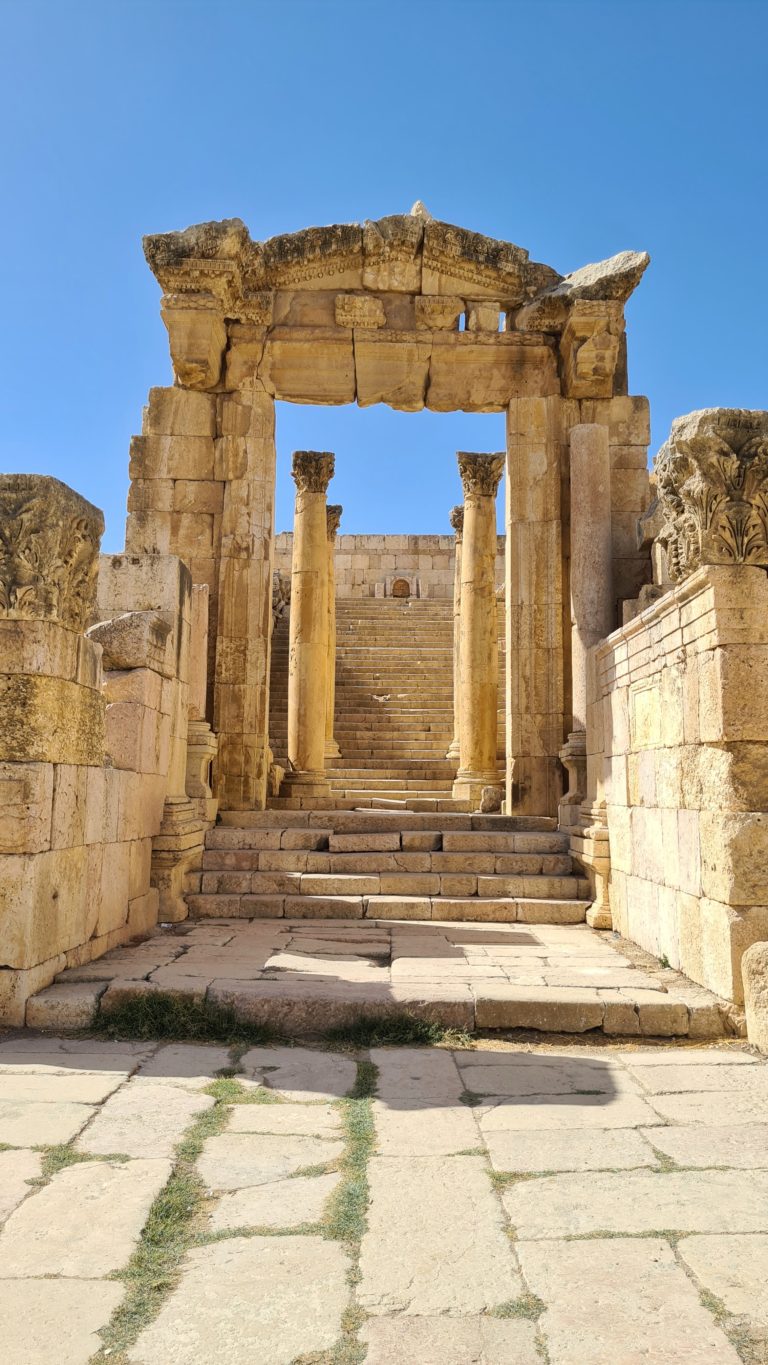
Day 6-7: Amman
Accommodation: The Y Hotel (100JD/ 2 nights)
I admit, we rested in Amman. Because we had 5 super intense and beautiful days, here we allowed ourselves to wake up at 11 and drink our coffee, on the balcony with a mega view of the hotel.
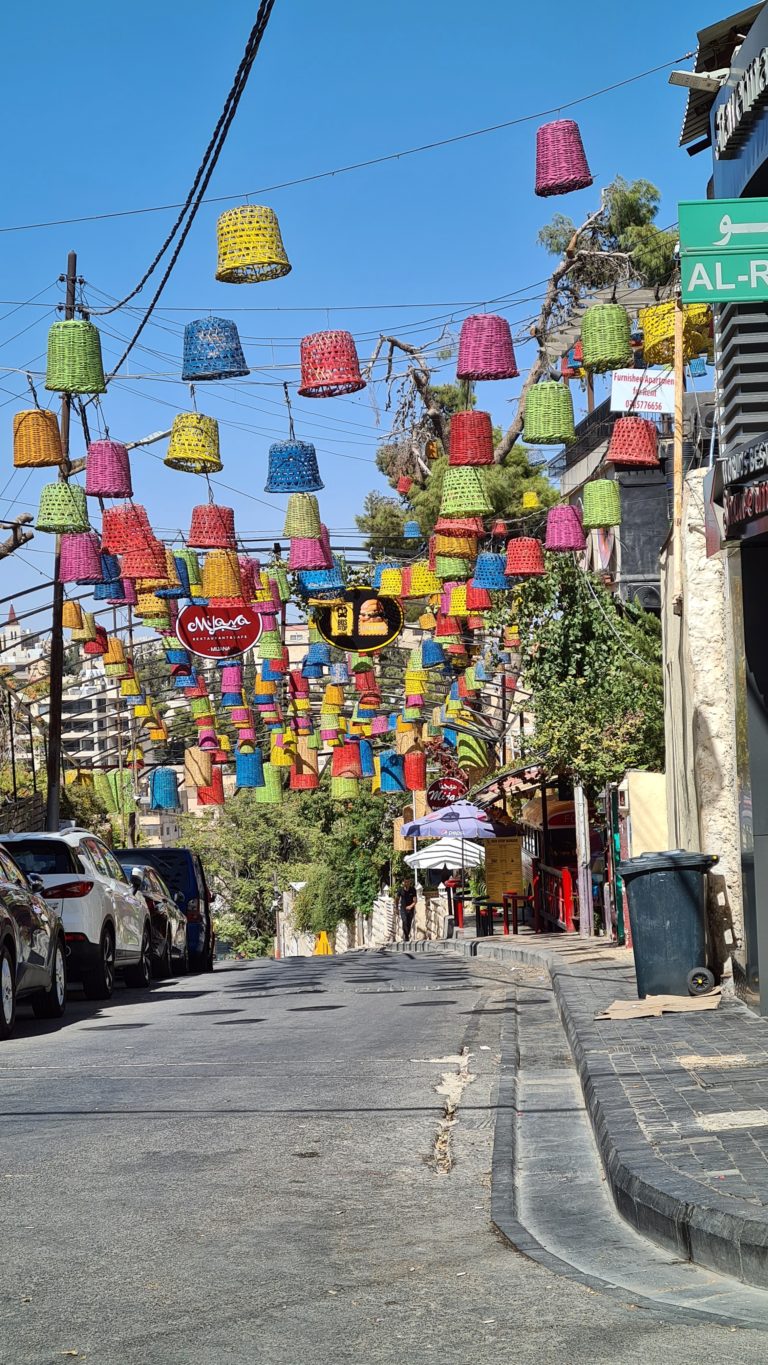
Back to Amman. It is known, like the white city due to the buildings or the city of the 7 hills, because initially, it was built on these hills. But later, the city and the number of buildings increased, and now it has over 19 hills.
From the hotel, which was located in a very good area, we walked on:
- Rainbow Street
- Al-Husseini Mosque
- Roman Theater
..and then we went up to the Citadel of the city, where there are: Temple of Zeus, Byzantine Church, Amman Citadel..
Free entry with the Jordan Pass.
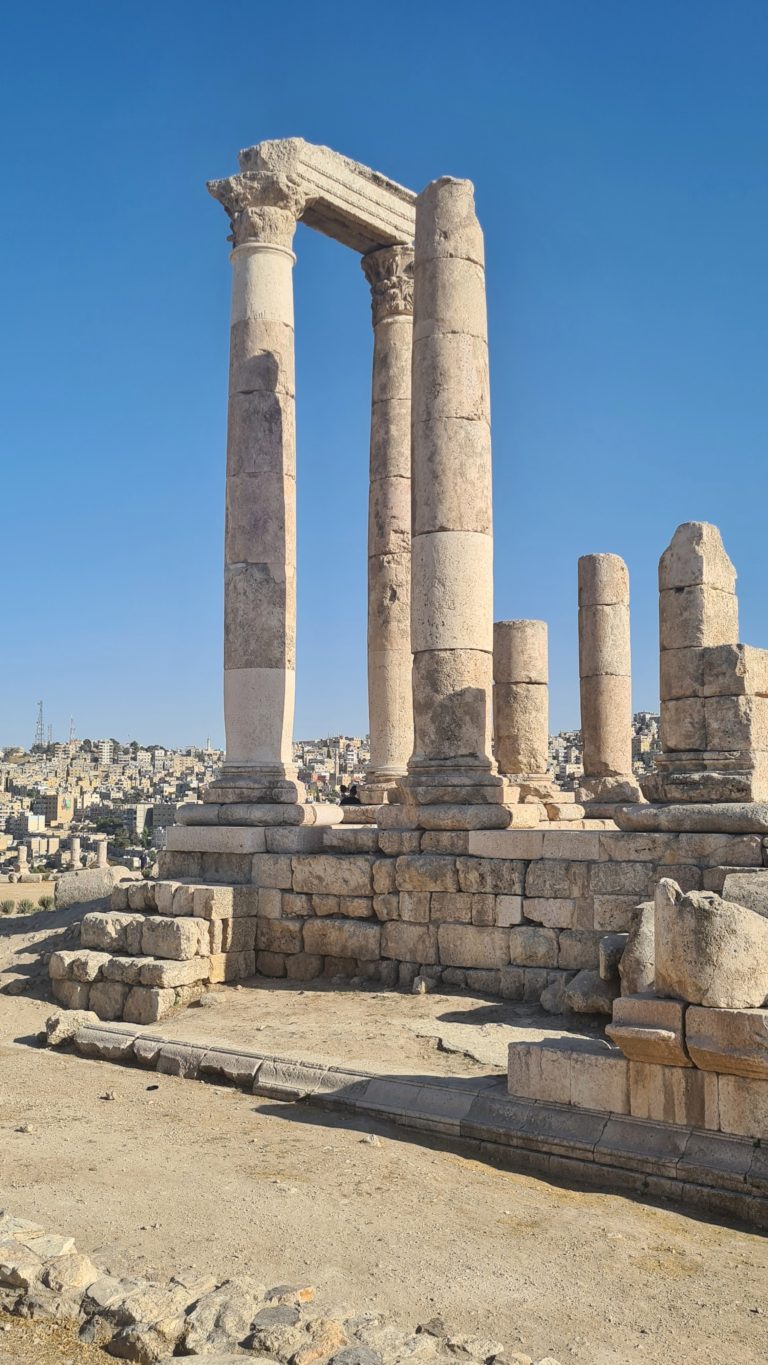
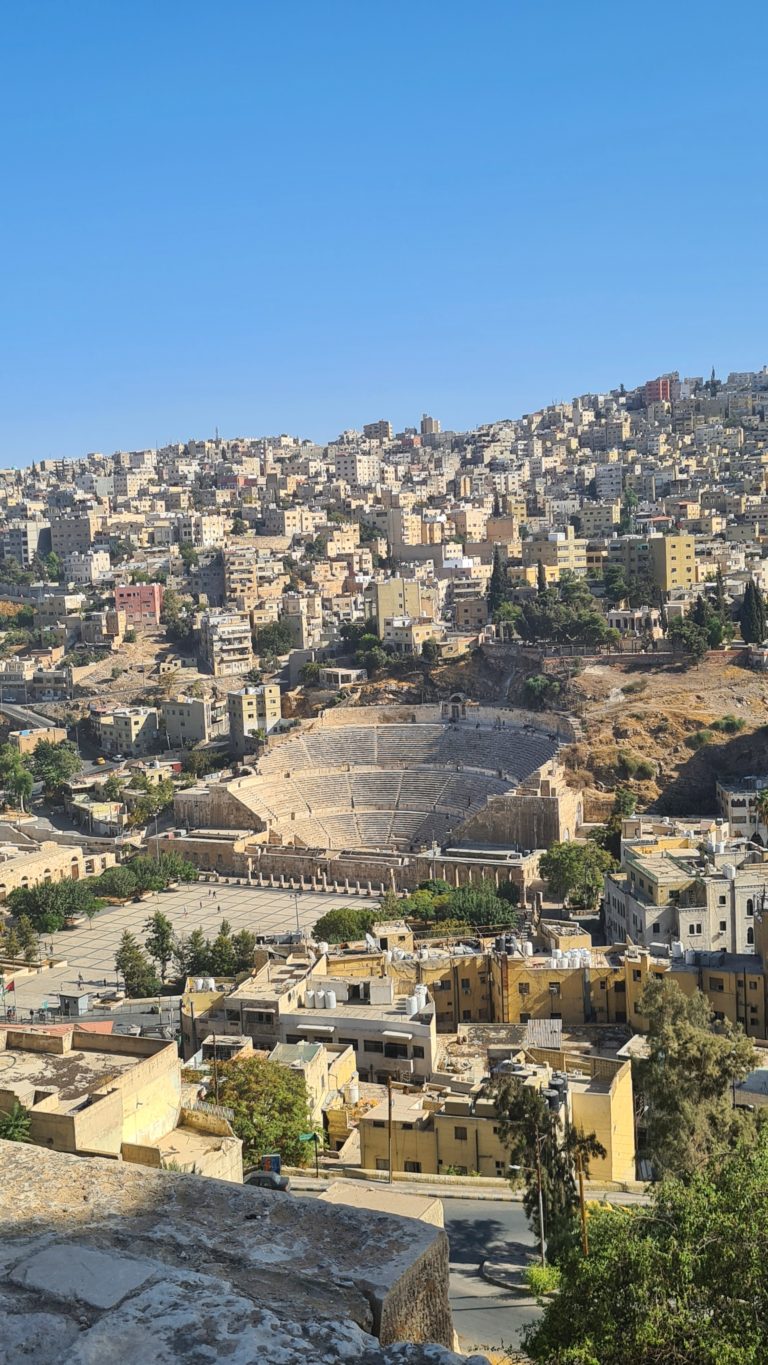
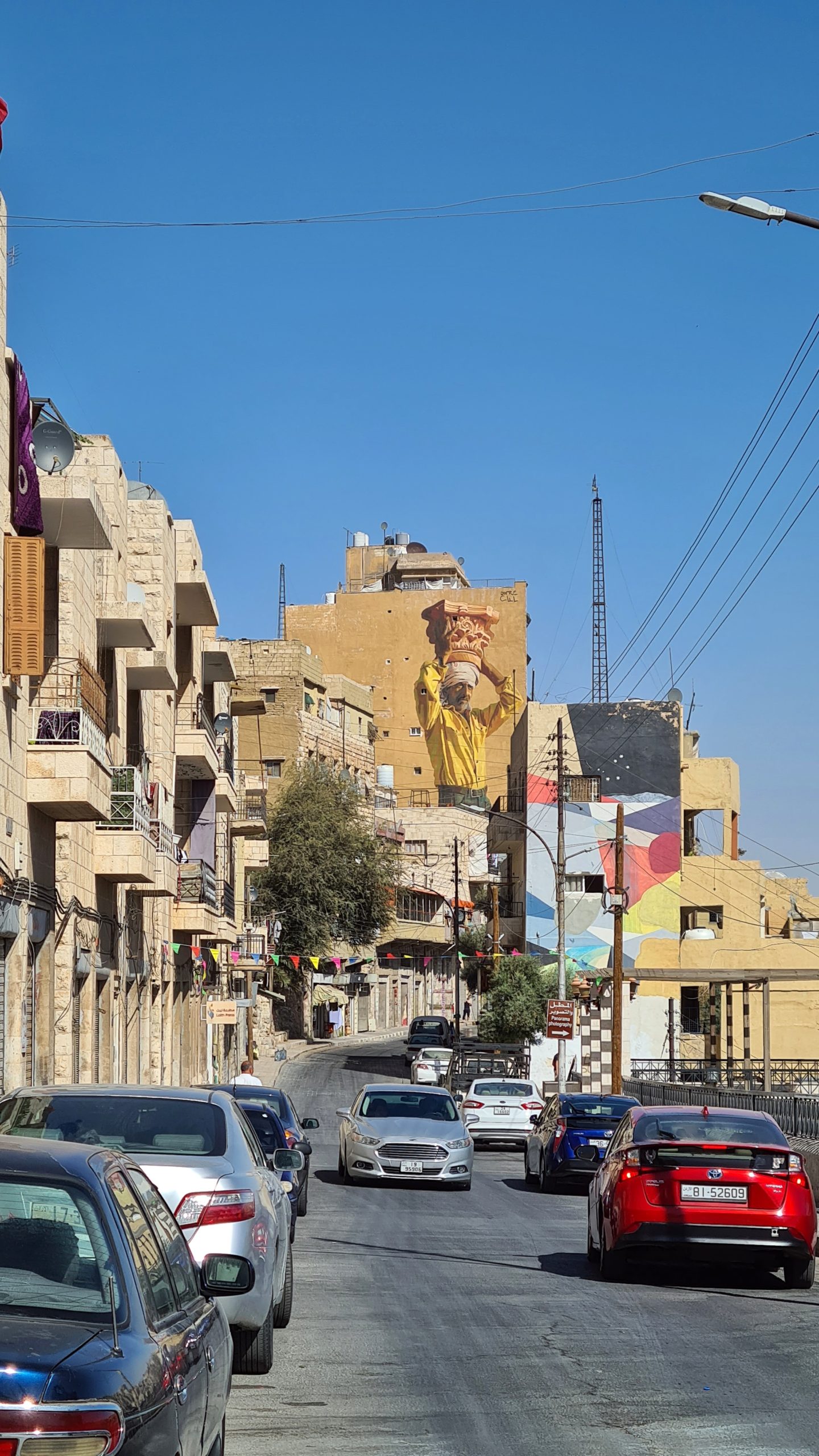
On the second day, we went to visit the Mosque of King Abdullah I, which reminded me of the blue mosque in Istanbul. They serve you tea, they also have a souvenir shop, and at the entrance, they give you clothes to cover your knees and hair.

We returned to the hotel and an uber took us to the airport. The driver was a tourist guide, an extraordinary man, who made the time to fly with his stories…
Jordanians are good people, very welcoming and ready to help you with anything you need! Such a country!
Restaurants / Traditional food
Madaba: Kawon bookstore, Ayola Cafe
Wadi Musa: Beit Al-Barakah
Wadi Rum: in the camp, where the food is cooked in the sand
Amman: Hashem (for a local experience)
Traditional dishes:
1. Hummus
2. Falafel
3. Mansaf (warm yogurt, rice, chicken/beef)
4. Maqluba (rice, vegetables, meat)
5. Kabisa (lil spicy)
6. Classic Shawarma jordanian style

شكرًا / Shkran, Cristiana 
